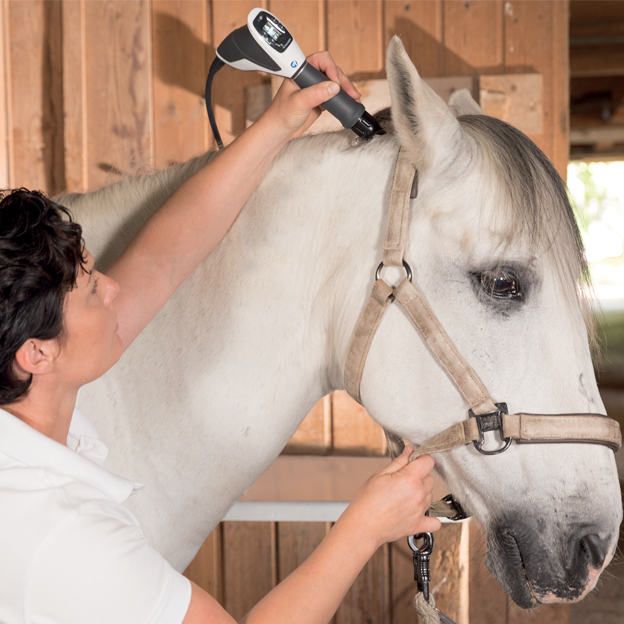Equine Therapy Success Stories: Genuine People, Genuine Psychological Changes
Equine Therapy Success Stories: Genuine People, Genuine Psychological Changes
Blog Article
Reviewing the Effectiveness of Laser Treatment in Horse Treatment for Injury Rehabilitation
The assessment of laser treatment's efficiency in equine injury rehab pivots on numerous factors, including healing time, pain reduction, and tissue regrowth. Vets often observe remarkable end results with laser therapy contrasted to standard techniques, positioning it as a critical aspect in equine treatment.
Recognizing Laser Treatment
Laser treatment has ended up being an essential device in vet medicine, specifically in the therapy of equine conditions. Known for its non-invasive nature and effectiveness, laser therapy involves the application of certain wavelengths of light to boost cells repair service and reduce swelling. This therapeutic technique is significantly favored for its capacity to accelerate the healing process in steeds experiencing a selection of musculoskeletal injuries and chronic problems.
The key mechanism behind laser therapy is its ability to improve cellular functions. When laser light permeates the skin, it is absorbed by mitochondria, the giant of cells, which brings about increased production of adenosine triphosphate (ATP) This biochemical power increase facilitates cellular repair service and regrowth. In addition, laser therapy advertises vasodilation, enhancing blood circulation and oxygen shipment to damaged tissues, therefore accelerating healing.
In equine medication, laser treatment is especially useful for problems such as tendonitis, osteoarthritis, and wound healing. The method is lauded for its pain-relieving properties, enabling equines to gain back movement and feature extra rapidly. Veterinarians also appreciate its marginal adverse effects compared to other therapy modalities, making it a trustworthy and risk-free choice for equine treatment.

Exactly How Laser Treatment Works

Upon absorption, these photons set off a series of biochemical modifications, boosting mitochondrial function and leading to boosted adenosine triphosphate (ATP) production. This surge in ATP speeds up mobile metabolism, advertising cells repair and regrowth. In addition, laser treatment modulates inflammatory reactions by impacting cytokine degrees and reducing oxidative anxiety, consequently reducing pain and swelling.
An additional considerable facet of laser treatment is its duty in enhancing microcirculation. The therapy advertises vasodilation, boosting blood circulation and oxygen distribution to broken cells (Equine Therapy). This assists in the removal of mobile particles and sustains the expansion of fibroblasts and collagen synthesis, critical for injury healing
Scientific Evidence
The efficiency of laser treatment in equine treatment has been substantiated with different scientific studies, showcasing its healing potential throughout a variety of conditions. Numerous controlled tests and empirical studies have recorded significant renovations in tissue repair service, pain decrease, and total rehab timelines. As an example, a research carried out by Turner et al. (2012) showed that equines treated with low-level laser treatment (LLLT) for ligament injuries showed accelerated healing contrasted to those getting conventional therapies. The research highlighted a significant reduction in swelling and enhanced collagen development.
In a similar way, study by Johnson and associates (2015) concentrated on equine muscle injuries, revealing that laser treatment significantly quickened muscle mass fiber regrowth and minimized muscle mass stiffness. These findings were supported by histological analyses revealing better muscle mass tissue company. Professional evaluations have actually shown that laser treatment can relieve persistent problems such as osteo arthritis. A study by Smith et al. (2018) reported that equines with osteoarthritic joints experienced remarkable discomfort relief and boosted series of motion following a program of laser treatment sessions.
Vet Insights

Vets also appreciate the convenience of laser treatment. It can be used for a wide variety of problems, from superficial injuries to deeper bone and joint injuries. Dr. Emily Brown highlights its utility in dealing with problems like tendonitis and osteoarthritis, where conventional therapies often fail. She explains that laser therapy can be customized to the particular needs of each horse, guaranteeing ideal results.
Moreover, vets value the ability to incorporate laser therapy with various other treatment methods. This multimodal method can enhance overall treatment efficiency, offering a comprehensive solution for equine rehab. Such recommendations from experienced experts emphasize the growing approval and application of laser therapy in equine medicine.
Practical Factors To Consider
A key facet of carrying out laser therapy in equine treatment includes recognizing the practical considerations that ensure its efficacy and safety and security. Firstly, it is important to pick the proper laser device, as various kinds differ in wavelength, power, and infiltration deepness. Equine Therapy. Veterinarians must be skilled in these specifications to tailor therapy procedures efficiently per injury kind
In addition, the regularity and period of laser therapy sessions need careful planning to take full advantage of healing benefits while lessening any possible unfavorable impacts. Regular tracking of the horse's reaction to therapy can guide necessary changes in the therapy program. Developing a safe and controlled environment during therapies is also vital to protect against accidental direct exposure to laser emissions, which could hurt both the horse and the trainer.
Educating and certification of employees providing laser treatment are extremely important to make sure appropriate strategy and to maintain safety criteria. Additionally, preserving precise documents of each session, including laser settings and observed results, is essential for evaluating the overall effectiveness of the treatment and for making you can look here data-driven decisions.
Final Thought
Laser treatment has actually become an effective modality in equine injury recovery, supplying considerable advantages in recuperation time, discomfort relief, and cells healing. Professional see it here researches emphasize significant renovations in problems such as tendonitis and osteoarthritis, credited to boosted mobile function and raised ATP manufacturing. Vet monitorings support these findings, highlighting superior results compared to traditional therapies. For ideal results, constant monitoring and customized therapy protocols continue to be essential in leveraging the full potential of laser treatment in equine care.
Report this page